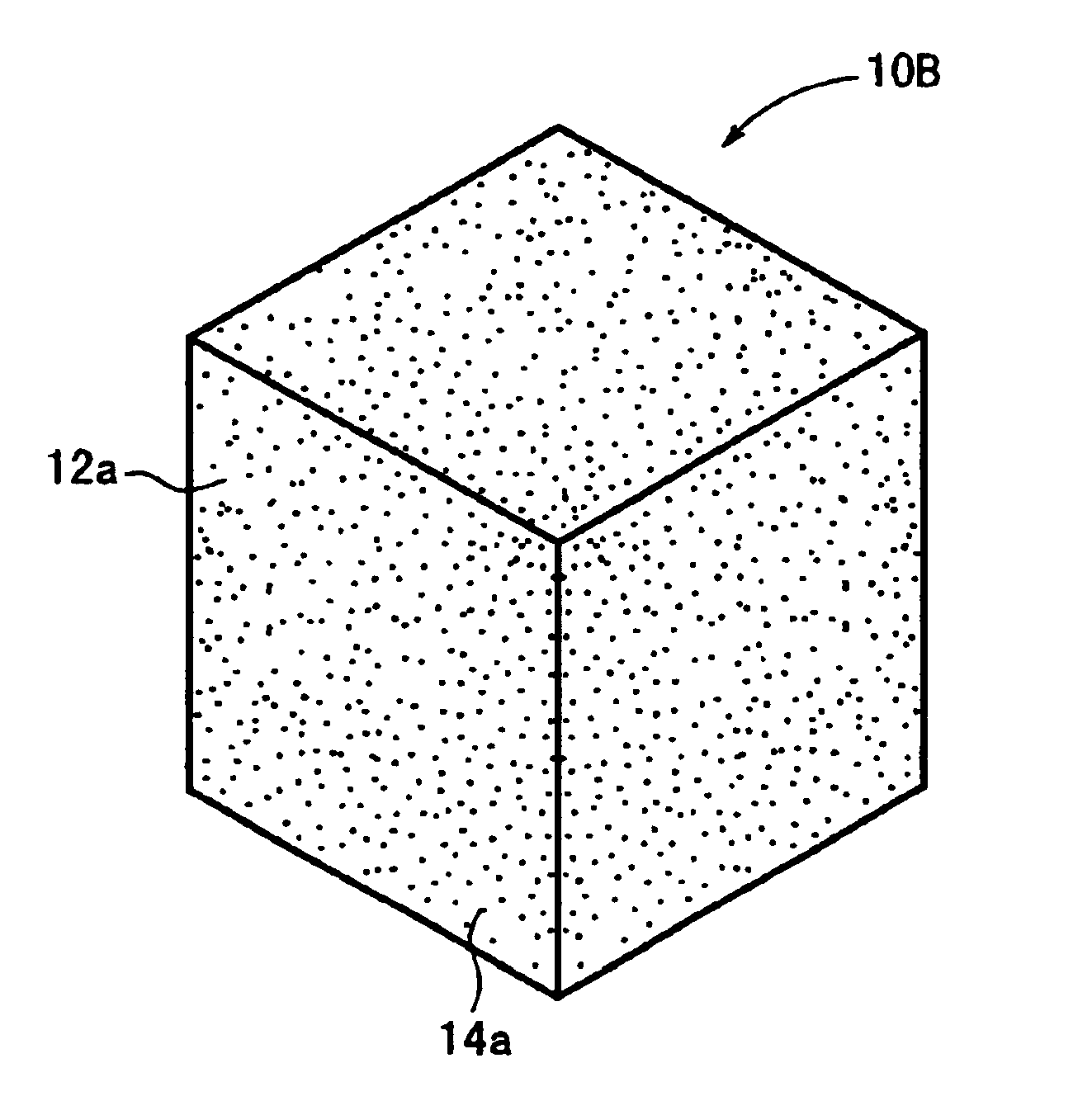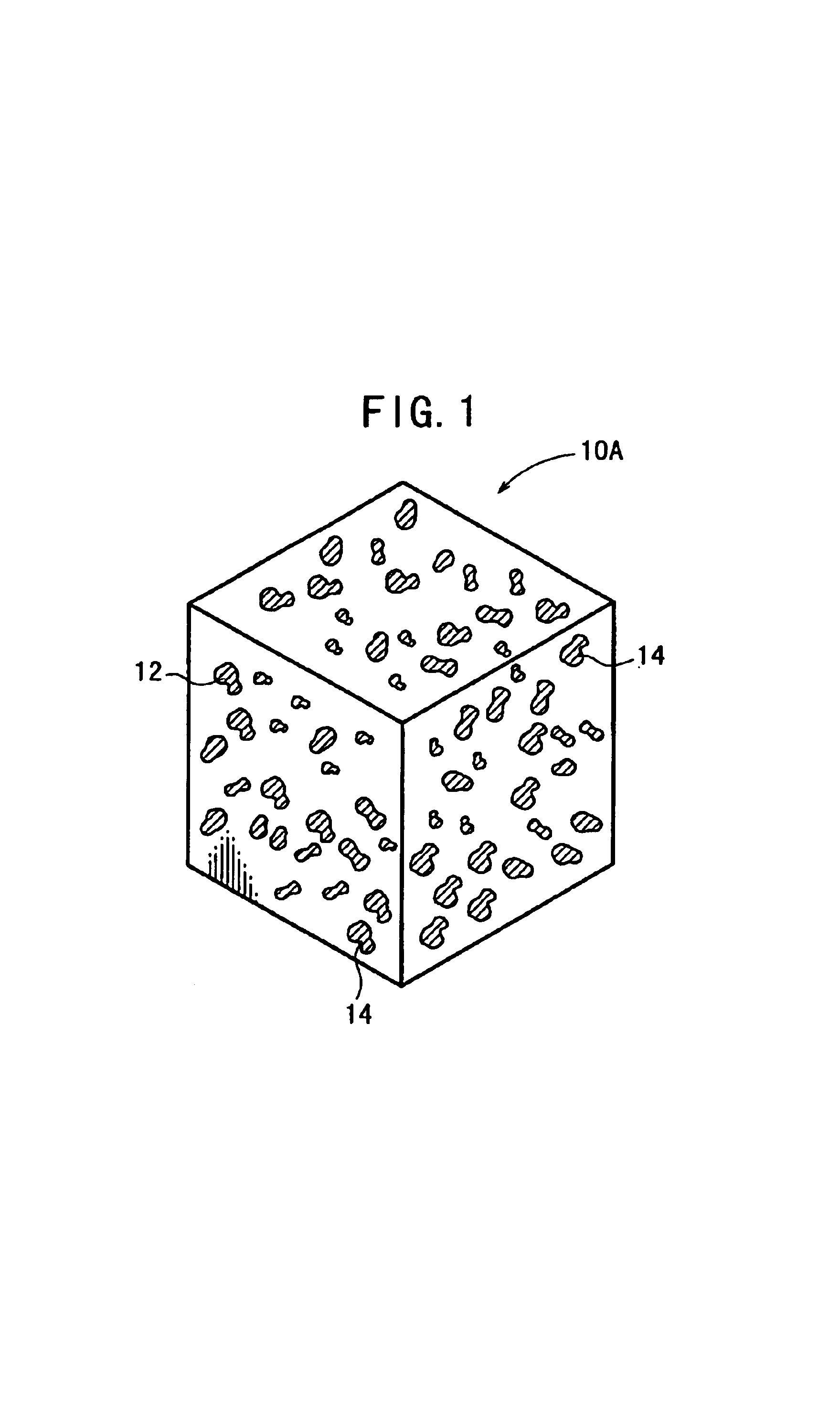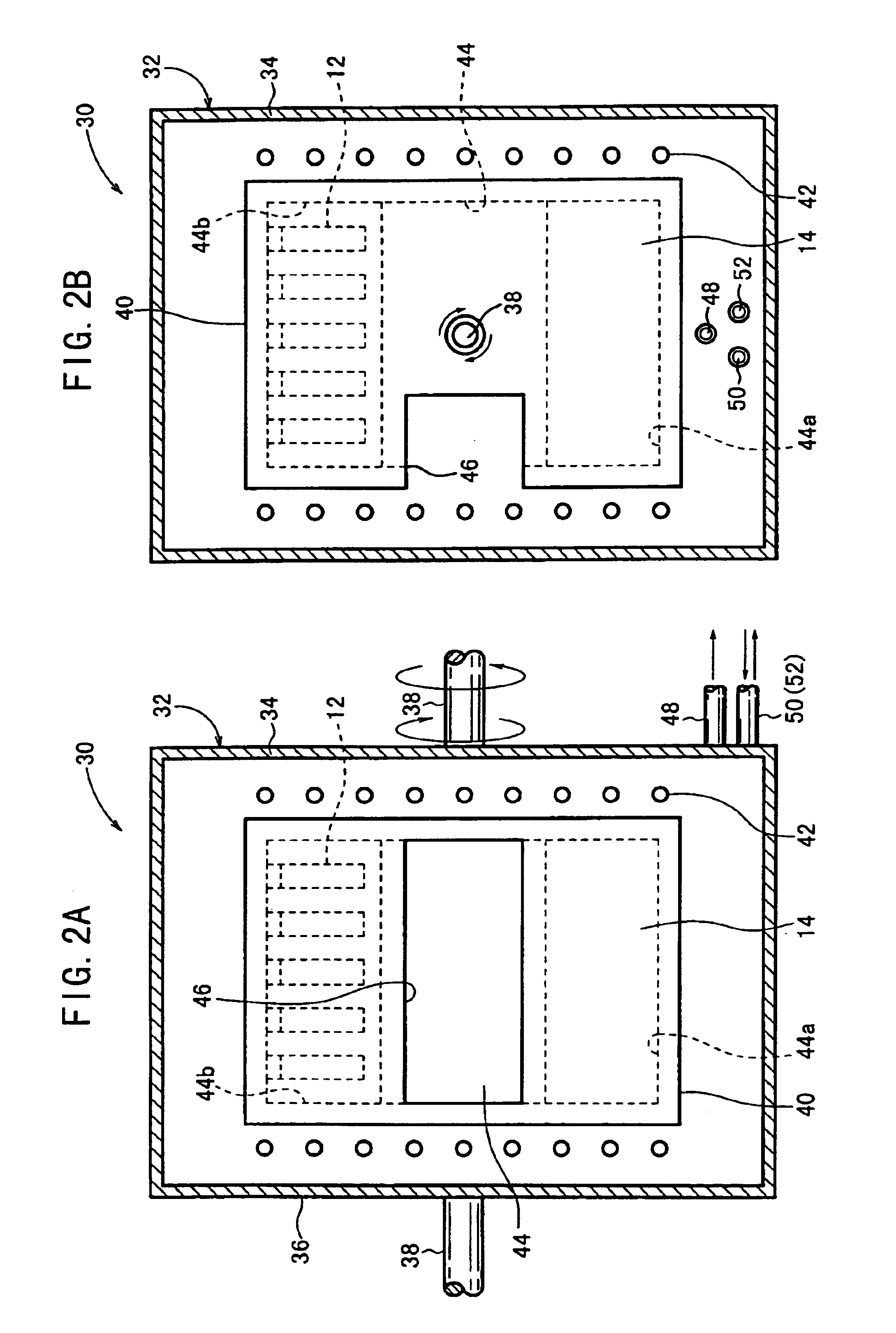Heat sink material and method of manufacturing the heat sink material
a heat sink and heat sink technology, applied in the field of heat sink materials, can solve the problems of large electric power consumption per operation area of semiconductors, insufficient release of generated heat amount, and an enemy of heat for ic chips
- Summary
- Abstract
- Description
- Claims
- Application Information
AI Technical Summary
Benefits of technology
Problems solved by technology
Method used
Image
Examples
first embodiment
[0102]As shown in FIG. 1, a heat sink material 10A comprises a porous sintered member 12 obtained by sintering carbon or allotrope thereof to form a network, in which the porous sintered member 12 is infiltrated with metal 14.
[0103]In this case, the carbon preferably used or the allotrope thereof has a coefficient of thermal conductivity of not less than 100 W / mK, desirably not less than 150 W / mK (estimated value in a state in which no pore exists), and more desirably not less than 200 W / mK (estimated value in a state in which no pore exists).
[0104]This embodiment is illustrative of a case of the heat sink material in which open pores of the porous sintered member 12 of graphite having a coefficient of thermal conductivity of not less than 100 W / mK are infiltrated with copper. Those usable as the metal 14 of infiltration other than copper include aluminum and silver.
[0105]As for the volume ratios of the porous sintered member 12 and the metal 14, the volume ratio of the porous sint...
second modified embodiment
[0156]Next, the second modified method will be explained with reference to FIG. 5. In an infiltrating step of the second modified embodiment, the high pressure vessel 30 is used, which includes a partition plate (not shown) composed of a porous ceramic material provided at a central portion in the refractory vessel 40 installed in the high pressure vessel 30. The interior of the refractory vessel 40 is comparted by the partition plate into a first chamber 44a and a second chamber 44b.
[0157]As for the partition plate, it is desirable to use a porous ceramic material having the porosity of 40 to 90% by volume, and the pore diameter of 0.5 to 3.0 mm. More preferably, it is desirable to use a porous ceramic material having the porosity is 70 to 85% by volume, and the pore diameter of 1.0 to 2.0 mm.
[0158]In the second modified embodiment, as shown in FIG. 5, graphite is firstly sintered to prepare a porous sintered member 12 of graphite (step S201). For the initial state, the high press...
second embodiment
[0173]Next, a heat sink material 10B will be explained with reference to FIG. 9.
[0174]As shown in FIG. 9, the heat sink material 10B according to the second embodiment is constructed by mixing powder 12a of carbon or allotrope thereof and powder 14a of metal 14, and forming an obtained mixture at a predetermined temperature under a predetermined pressure.
[0175]Those preferably used as the carbon or the allotrope thereof are those having a coefficient of thermal conductivity of not less than 100 W / mK, desirably not less than 150 W / mK (estimated value when no pore exists), and more desirably not less than 200 W / mK (estimated value when no pore exists). Especially, in the second embodiment, it is possible to use diamond other than graphite. This embodiment is illustrative of the heat sink material 10B constructed by mixing powder of copper and powder of graphite having a coefficient of thermal conductivity of not less than 100 W / mK, and forming an obtained mixture. It is possible to u...
PUM
| Property | Measurement | Unit |
|---|---|---|
| Temperature | aaaaa | aaaaa |
| Power | aaaaa | aaaaa |
| Power | aaaaa | aaaaa |
Abstract
Description
Claims
Application Information
 Login to View More
Login to View More - R&D
- Intellectual Property
- Life Sciences
- Materials
- Tech Scout
- Unparalleled Data Quality
- Higher Quality Content
- 60% Fewer Hallucinations
Browse by: Latest US Patents, China's latest patents, Technical Efficacy Thesaurus, Application Domain, Technology Topic, Popular Technical Reports.
© 2025 PatSnap. All rights reserved.Legal|Privacy policy|Modern Slavery Act Transparency Statement|Sitemap|About US| Contact US: help@patsnap.com



